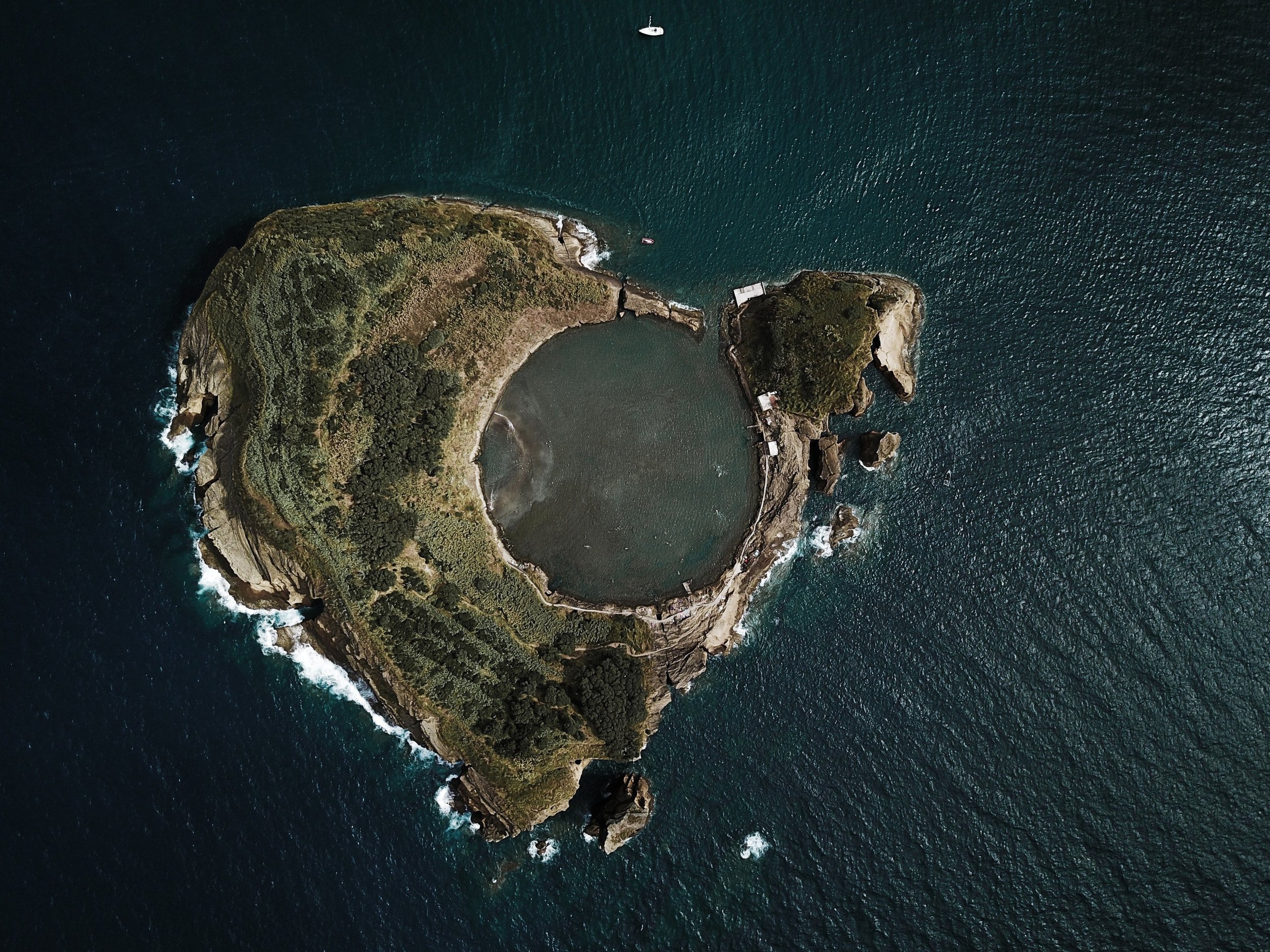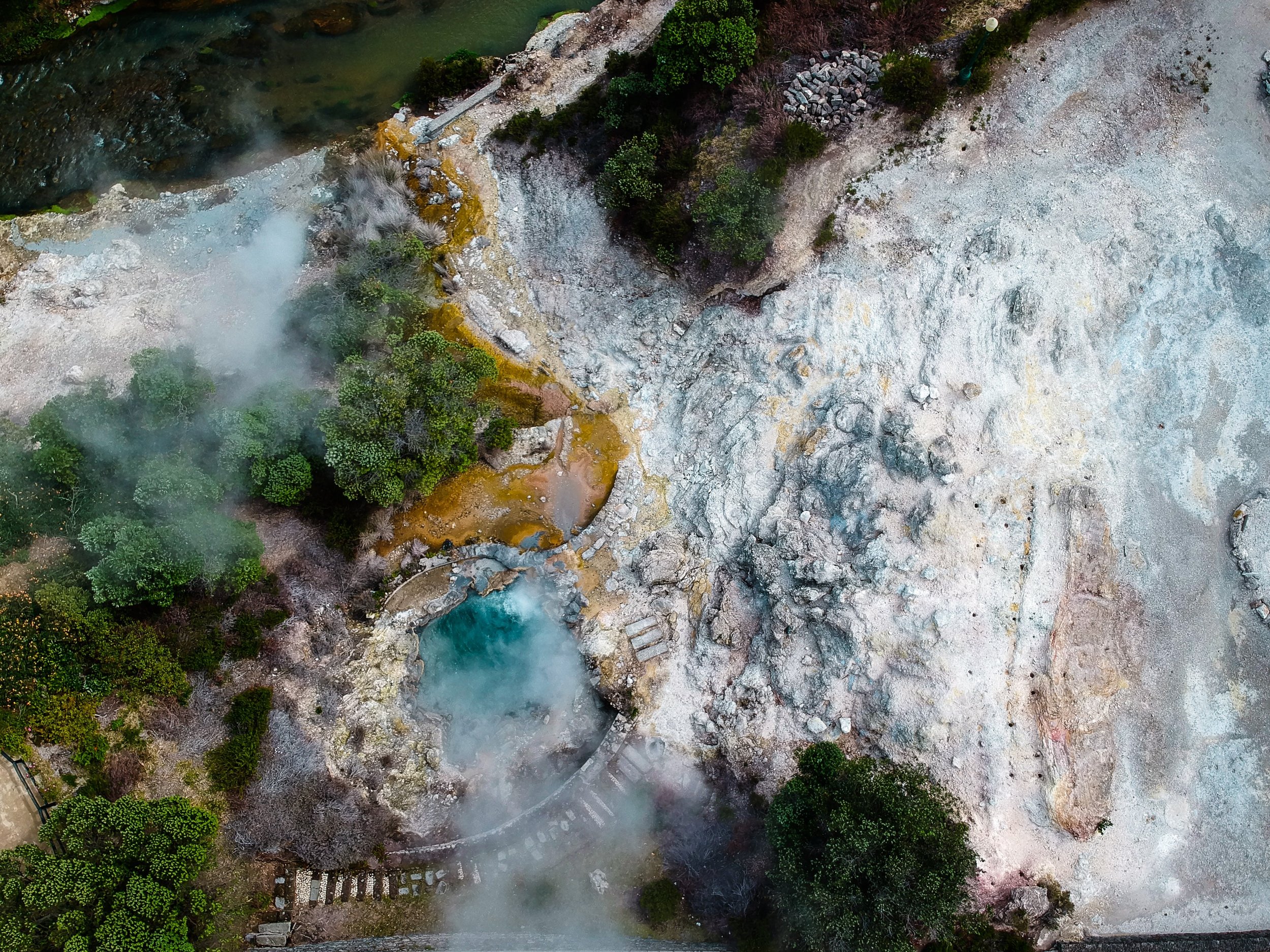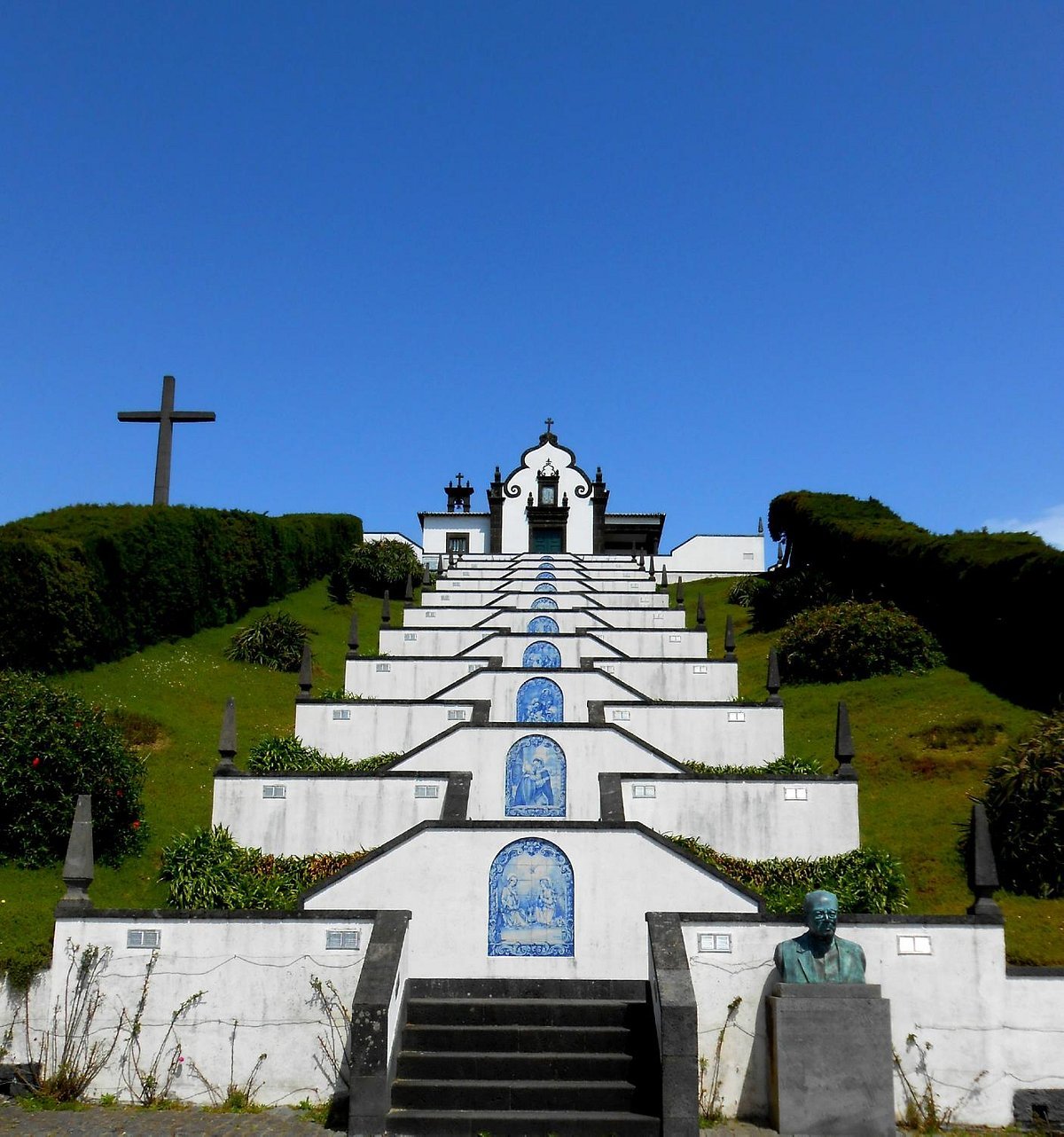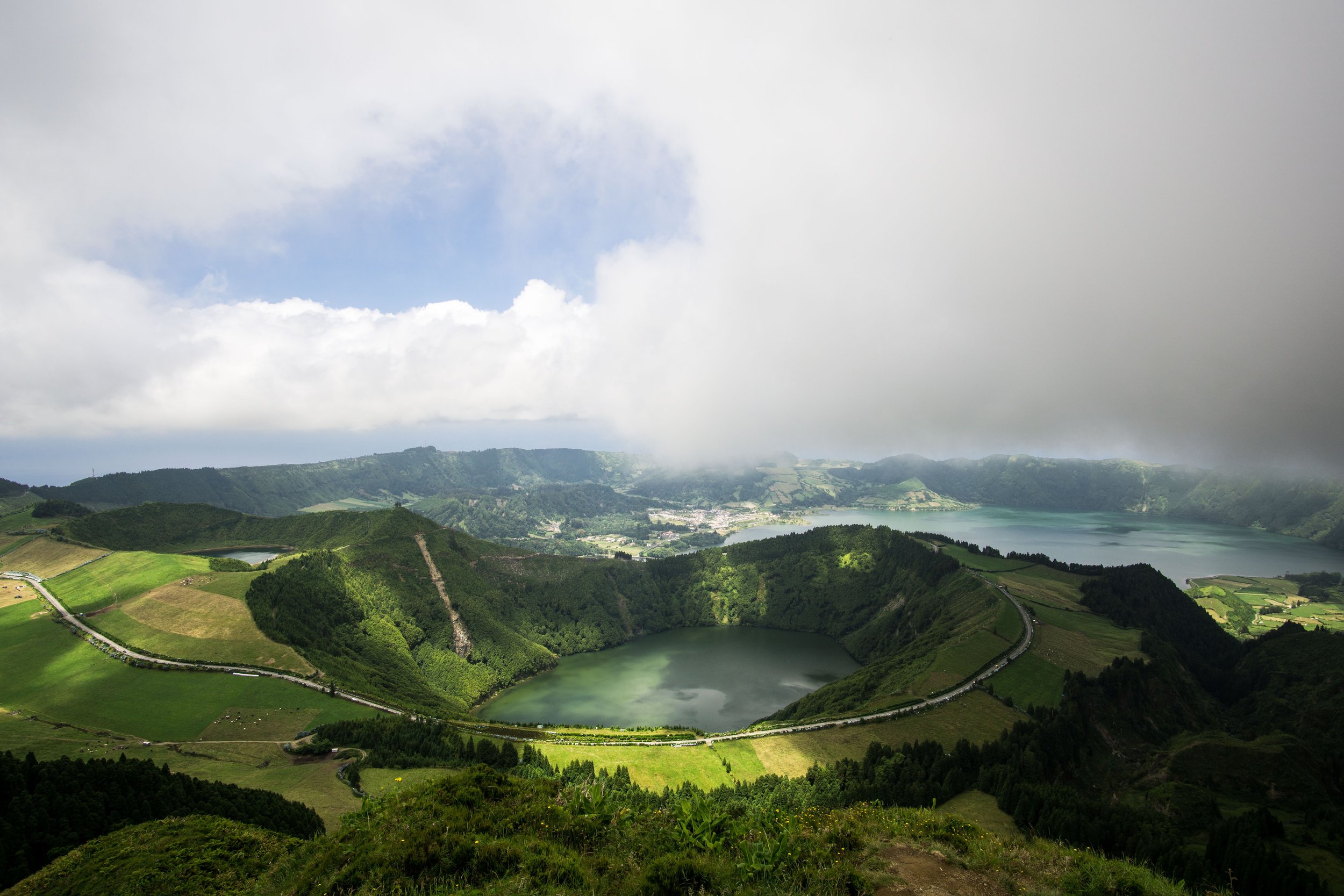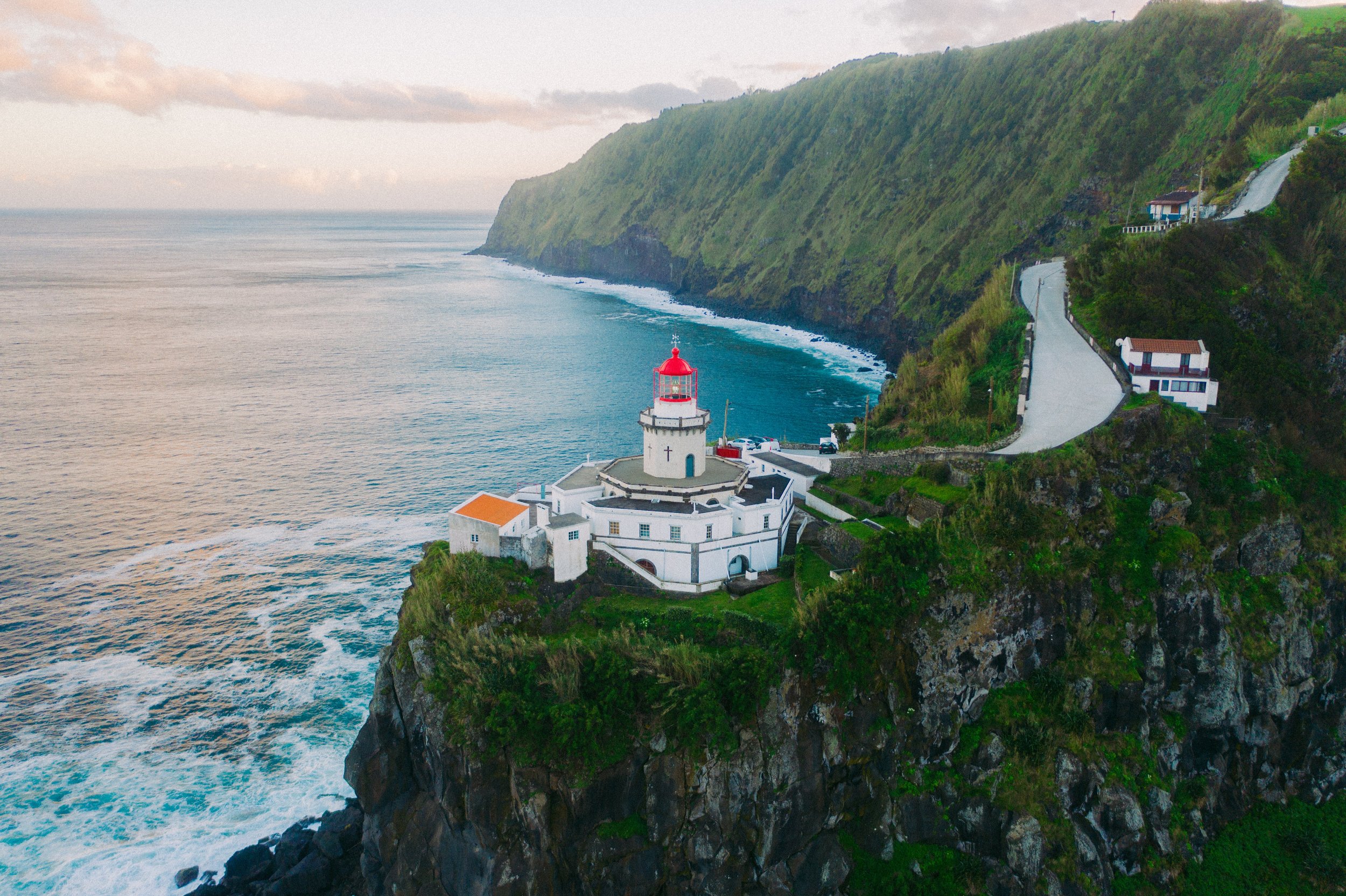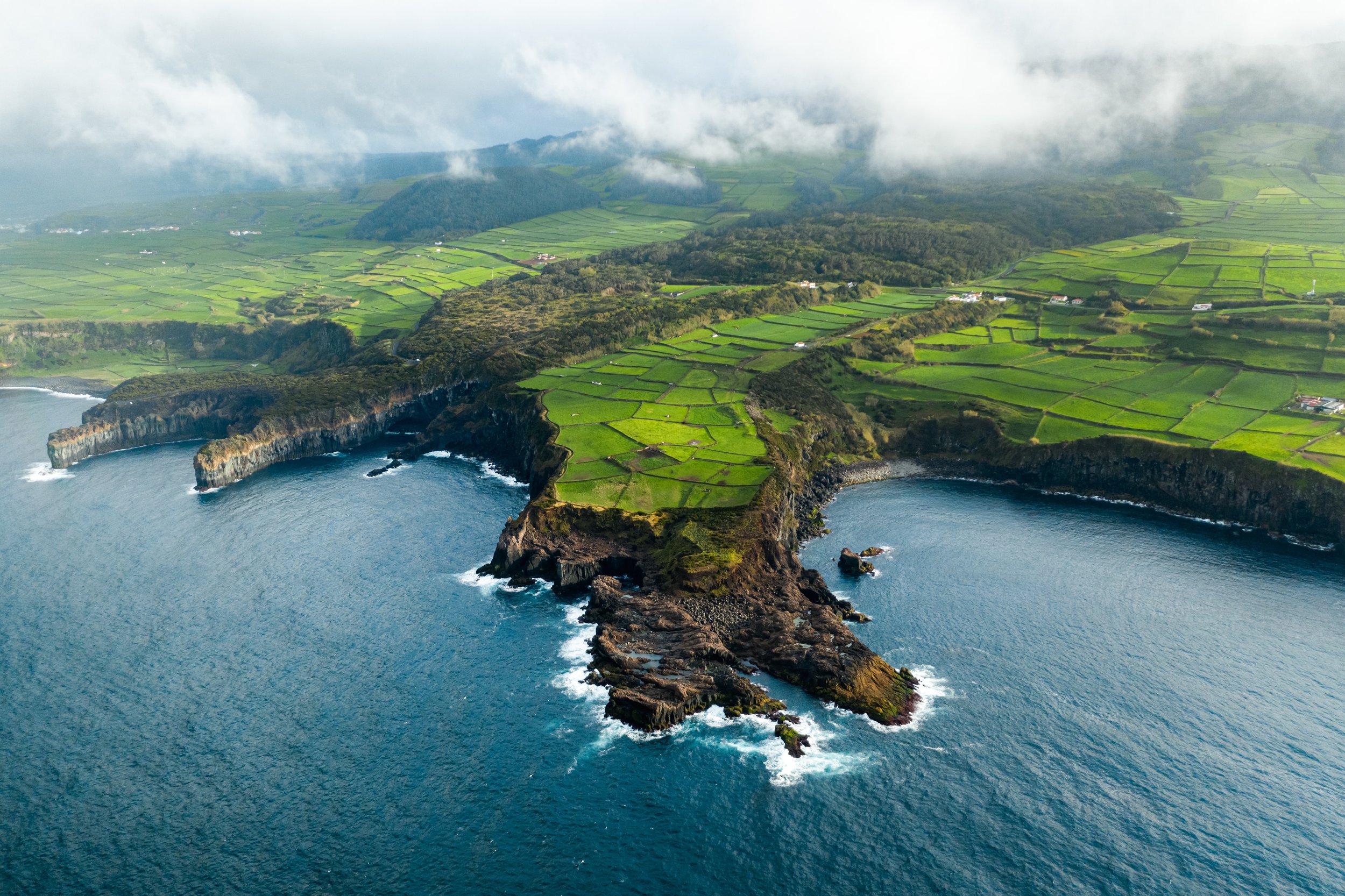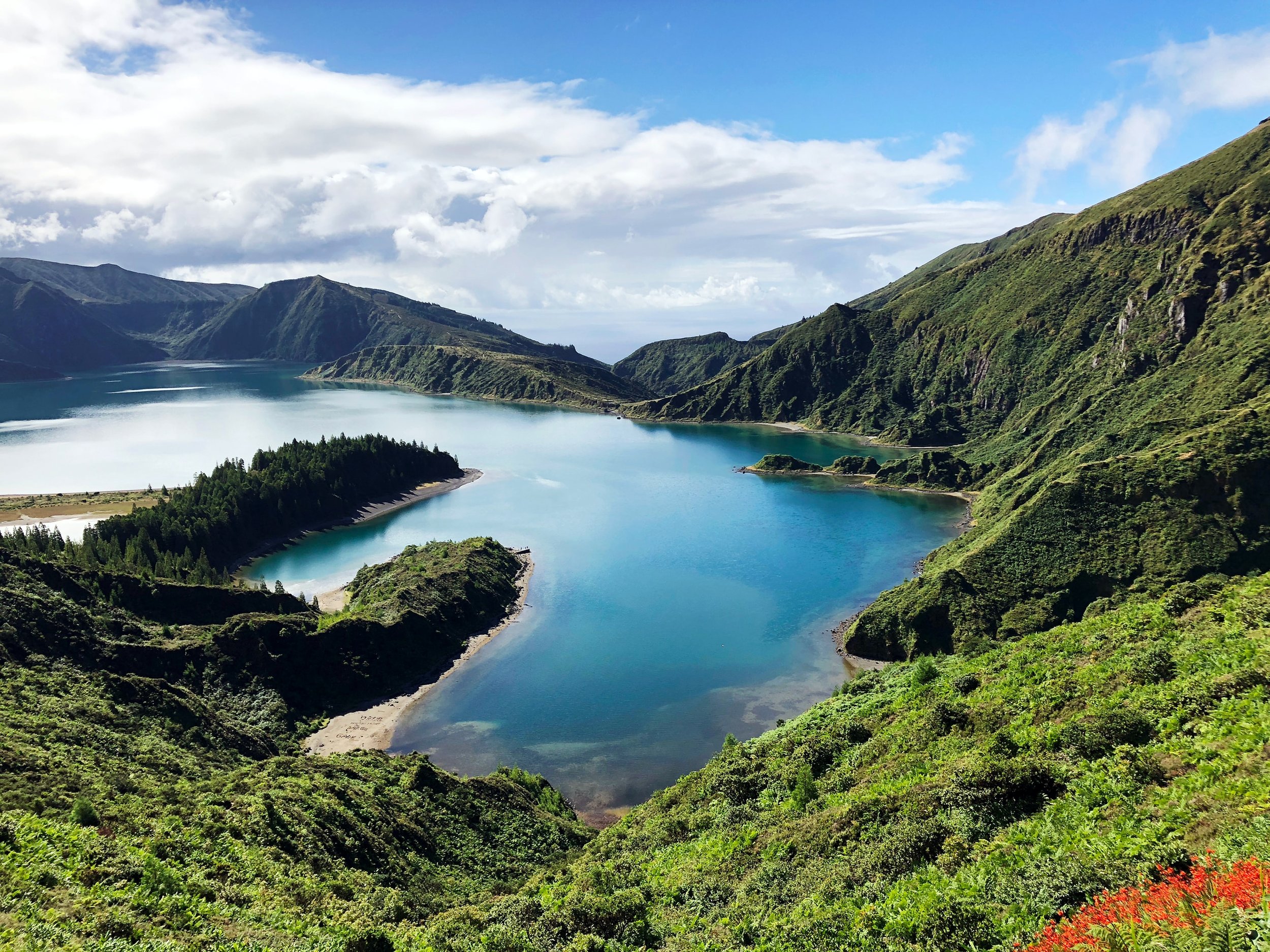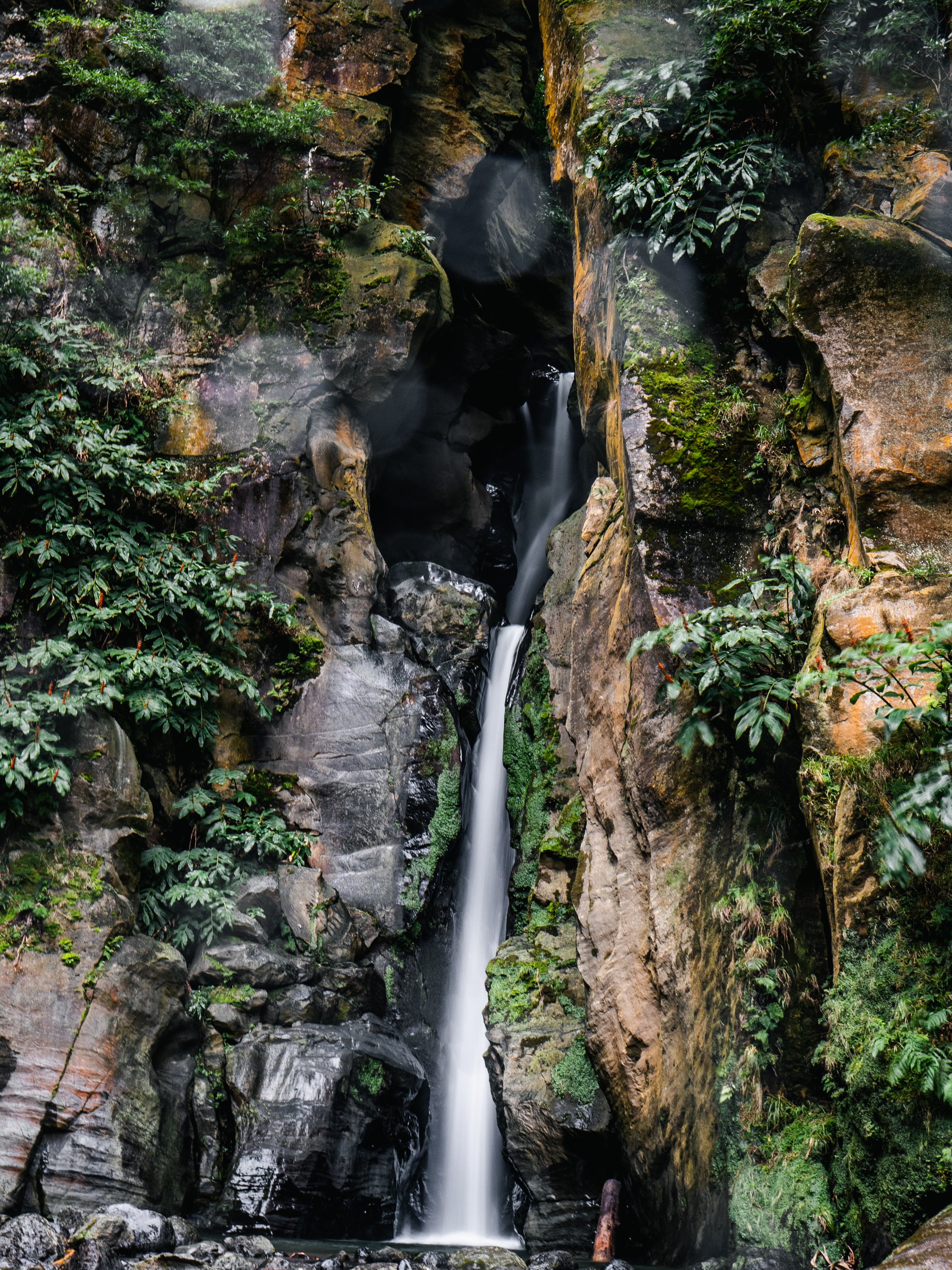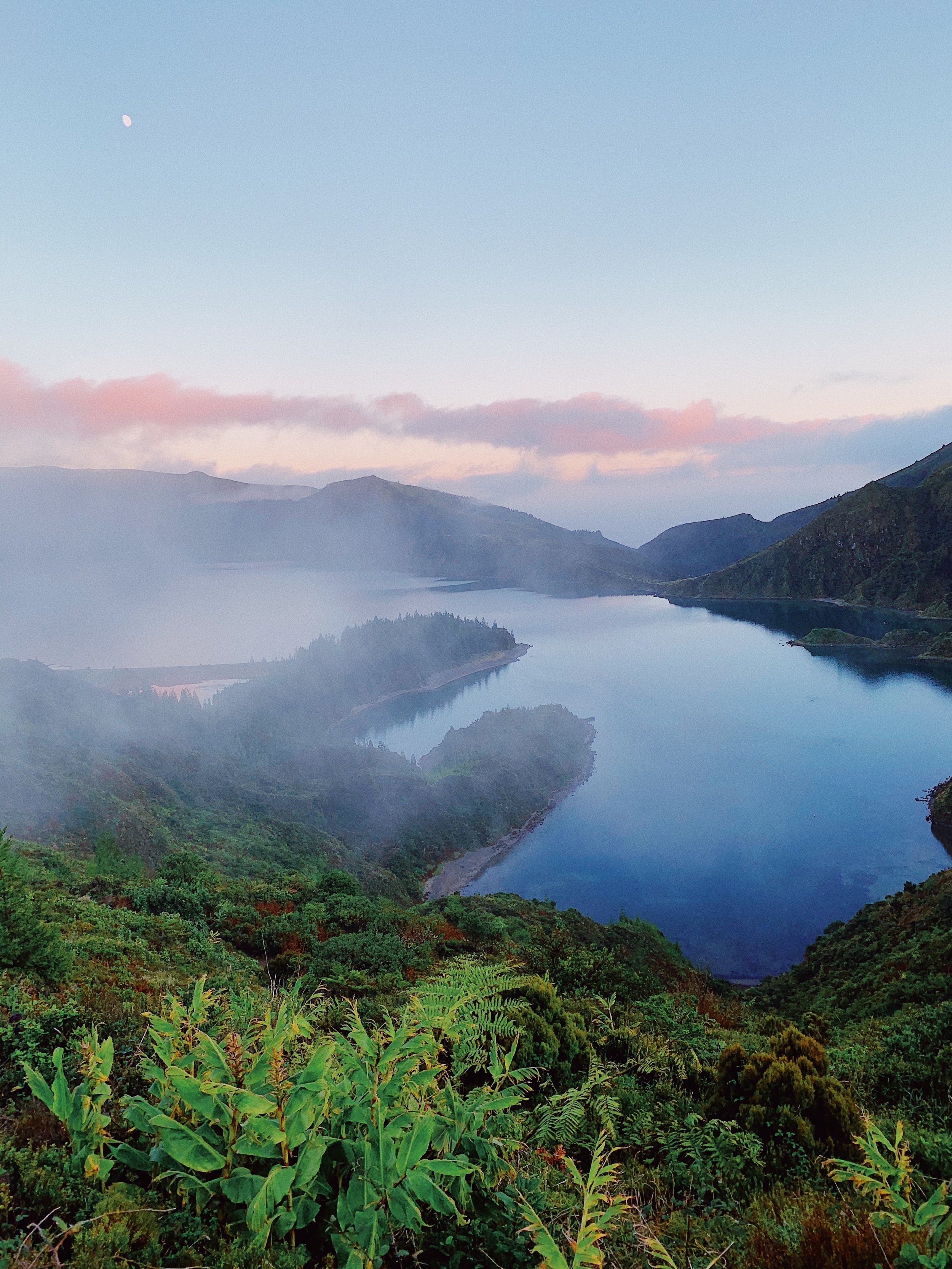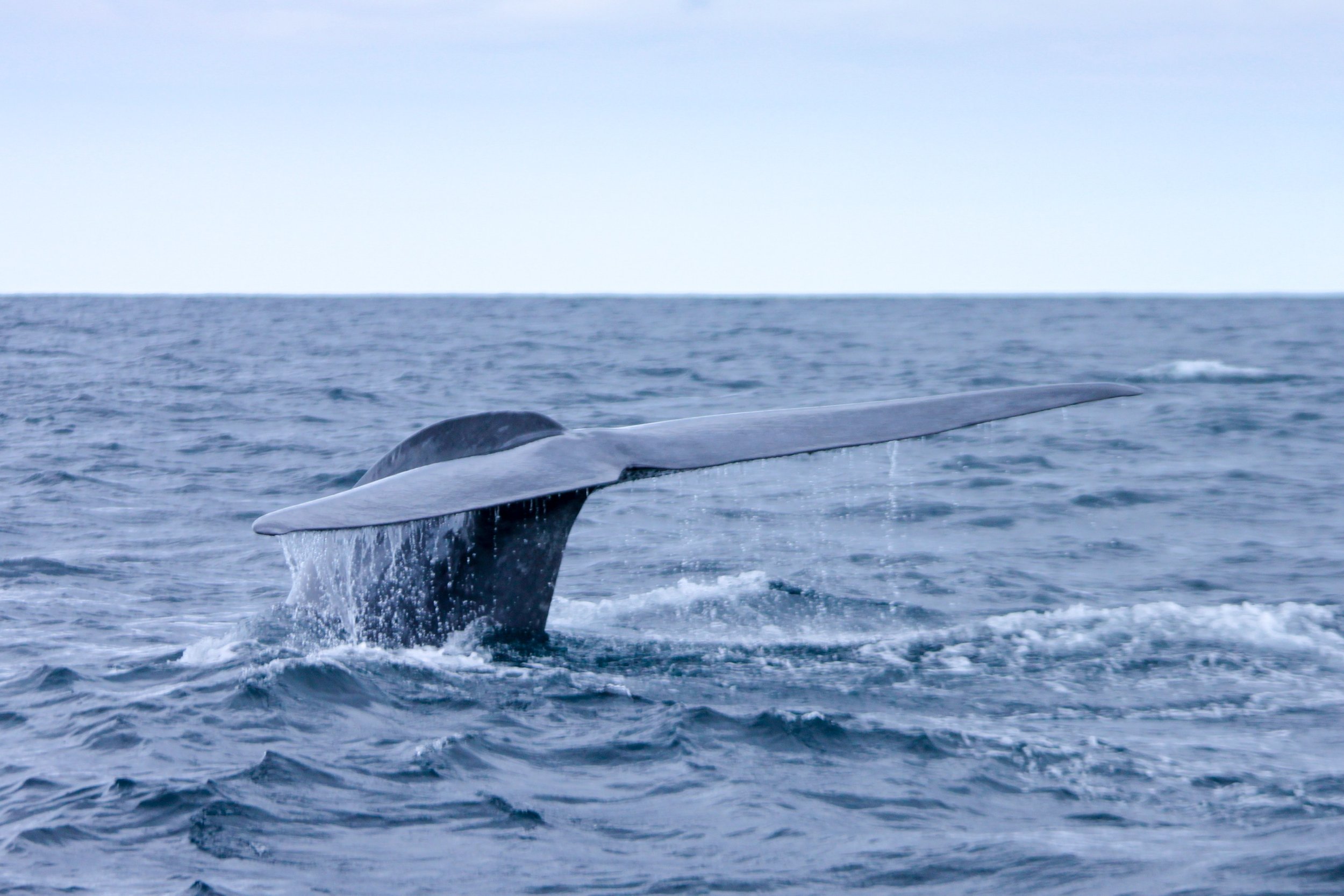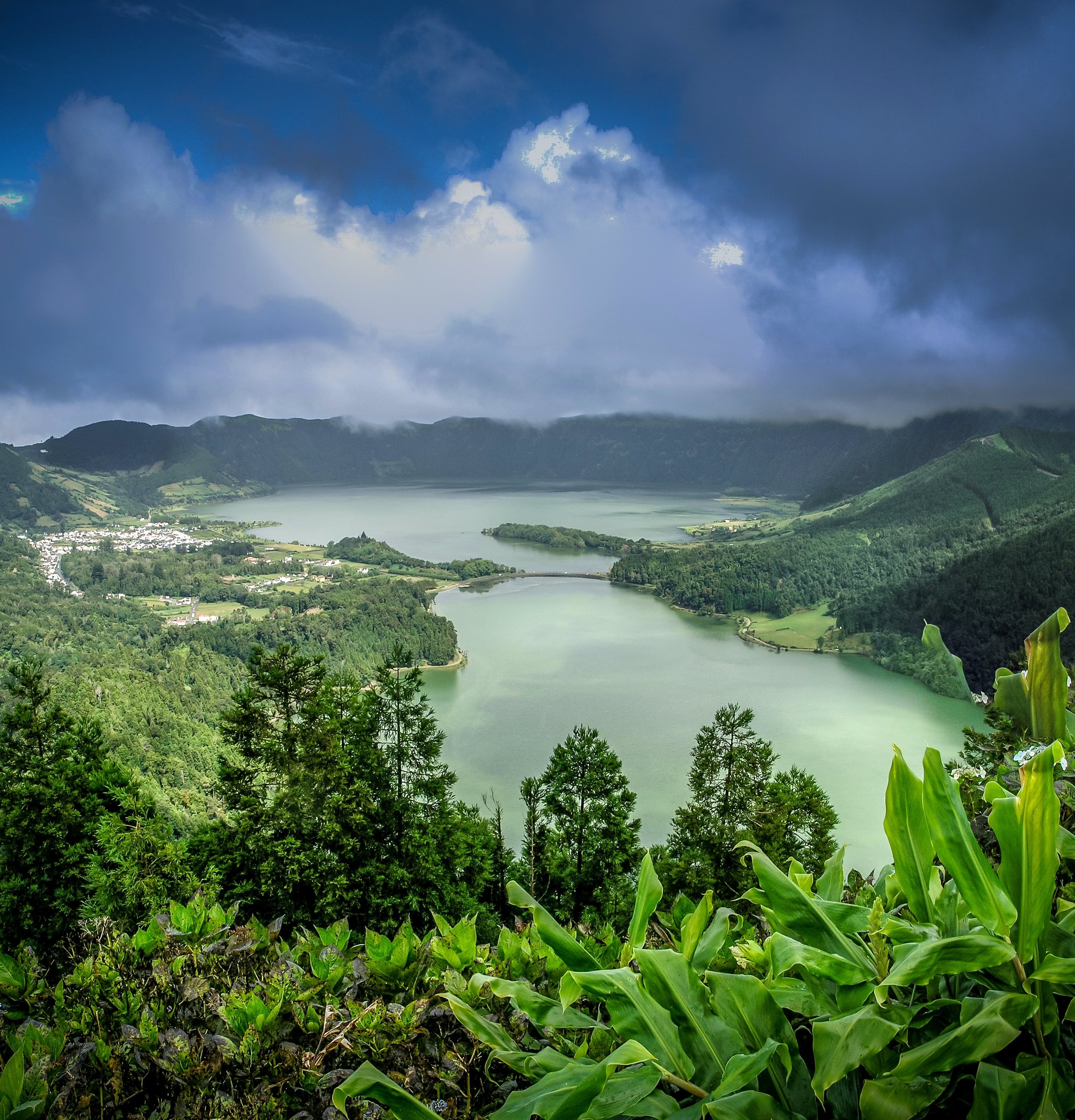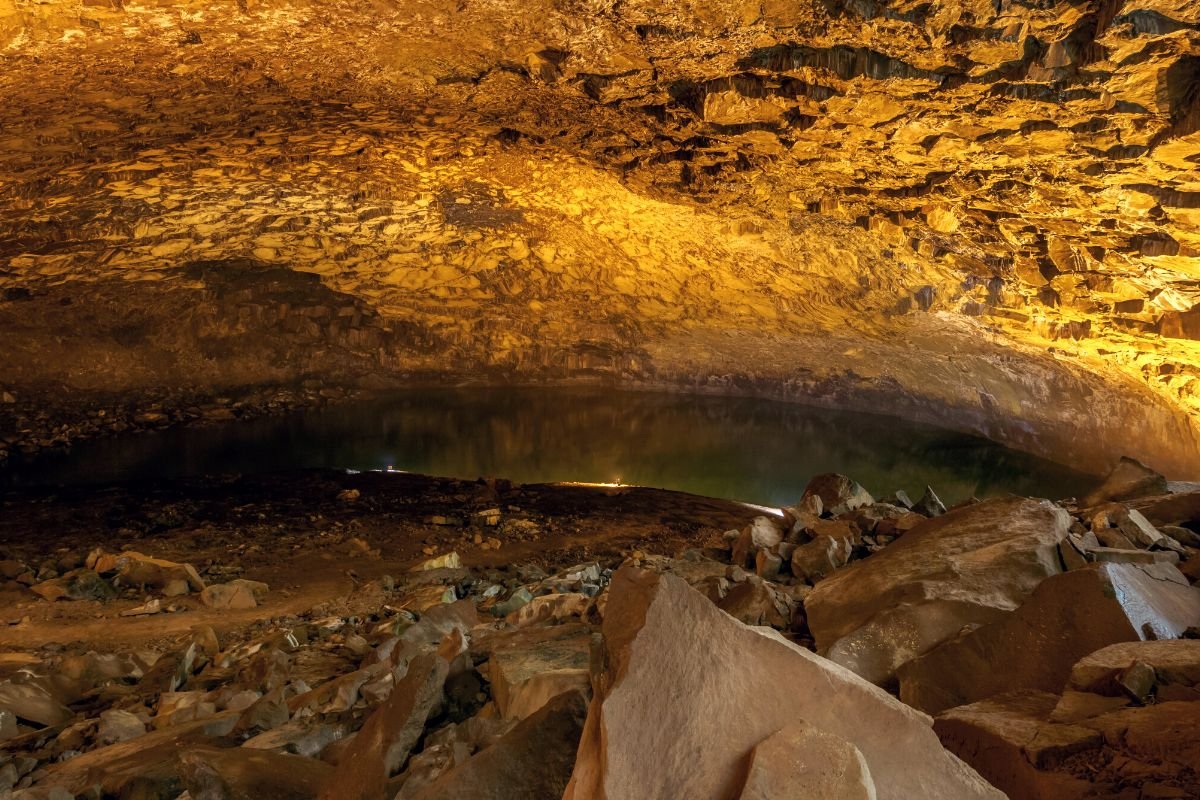The best Azores travel tips
The Azores have been getting more attention lately, and for good reason. It´s such a wonderful and special destination, and the region is actively working on being a sustainable destination. The Azores Islands are a Portuguese archipelago in the North Atlantic Ocean, located about 1,500 km (930 mi) from Lisbon and about 3,900 km (2,400 mi) from the east coast of North America. The archipelago is an autonomous region of Portugal and consists of nine volcanic islands, divided into three groups. These are Flores and Corvo, to the west; Graciosa, Terceira, São Jorge, Pico, and Faial in the center; and São Miguel, Santa Maria (and the Formigas Reef) to the east. The Azores are considered one of the greenest destinations in the world and are seen as an example of best practice in harmonizing tourism and nature. The region has a rich and protected geodiversity and marine life, natural areas with well-regulated hiking trails as well as an Eco school.
The islands are known for their beautiful nature, where you can hike in the mountains and enjoy views of the ocean and lakes, relax in the hot springs, go diving in the clear blue waters or go whale and dolphin watching. In fact, the Azores are best known for whale and dolphin watching since the archipelago is a pit stop or home for about a third of the world’s species of cetaceans.
There are a few things that you can do on any of the islands, such as chasing waterfalls, checking out the beaches, viewpoints, surfing and scuba diving, and whale watching. One advice I would like to give is to always check the weather (and talk with locals or book a tour with a local company) when planning an excursion on the Azores. Remember, you are in the middle of the Atlantic and the weather can be quite fickle and foggy. Check this list with some of the must-sees per island:
São Miguel
Terra Nostra Park. This park located in Furnas Valley is home to beautiful botanical gardens, a hotel and a thermal pool. The color of the pool doesn´t look very inviting, but the hue comes from the iron-rich mineral deposits in the water, which are a great natural remedy for a variety of ailments.
Furnas Valley. The Furnas Valley is a giant volcanic crater which last erupted in 1630. The area is popular because of the medicinal properties of its mineral water. In the valley there are various things to see and do, such as geothermal steam holes, hot springs, Poça Dona Beija and Pico do Ferro viewpoint.
Sete Cidades Caldera. Sete Cidades is probably one of the most famous sights of the island and its legendary twin Blue and Green Lake are two of the 7 Natural wonders of Portugal. There are plenty of hikes and trails in the area with stunning views over the evergreen landscape. Don´t miss the Vista do Rei lookout on the southern rim.
Ribeira dos Caldeirões Natural Park. On the northeast side of the island you´ll find the Parque Natural da Ribeira dos Caldeirões. Right at the entrance you´ll find the first waterfall. In the park (free admission) you can walk around and enjoy the lush vegetation and find more waterfalls.
Ermida de Nossa Senhora da Paz. The Our Lady of Peace chapel is located on the south and offers amazing views over the Atlantic Ocean. the chapel itself can be reached after walking up a couple of flights of stairs, which are beautifully designed in white and black stones that are typical to the Azores.
Ponta Delgada Antonio Borges garden. António Borges, who created this park, was an Azorean businessman and politician. In the park you´ll find tree species from different parts of the world, a set of caves and nooks, and two beautiful viewpoints
Lagoa do Fogo. The “Lake of Fire” is another famous spot in São Miguel and it´s also famous for nearly always being foggy. You have beautiful views over the lake from the Miradouro da Lagoa do Fogo. There are trails to go into the lake and also around the lake.
Tea plantations. Visit he tea fields of Gorreana Tea Factory, which is one of only a handful of operational tea plantations in Europe. They are located approximately 25 km from Lagoa do Fogo, in the Ribeira Grande municipality.
Islet of Vila Franca do Campo. This is an ideal spot to spend a day in and around the ocean. The beach inside the volcanic crater is rich in marine life and is a great place for snorkeling.
Gruta do Carvão. The cave of coal is a lava cave complex. The Gruta is located just outside of Ponta Delgada and is the largest lava tube on the island ( 1,650 meters). The Gruta can only be visitied with a guide and it´s best to book in advance.
São Jorge
Fajãs. São Jorge is known as the island of fajãs. Fajãs can be defined as low and flat land resulting from landslides from a slope or cliff or from lava flows that penetrate the sea. The fajãs on the southside are used to grow coffee. The most stunning fajã in São Jorge is the Fajã de Santo Cristo. It is only accessible by quad-bike or foot, so this one is not for everybody.
Sete Fontes Forest Park. This 12 hectare park is situated on the northwestern side of the island and is well worth a visit. It has many footpaths and trails, lakes, streams and various springs, a children's playground and a picnic area.
Velas and Arco Natural de Velas. Velas is the main center of São Jorge and has a picturesque and quiet historical center. From here you a clear view to Mount Pico whenever you look to the sea. Walk around, visit the Jardim da República, and check out the arco natural, a natural arch in basaltic lava, located in Fajã da Ribeira da Areia.
Simão Dias Natural Pool. The natural pool is entirely formed by lava rock formations and is a unique experience to swim in. Be careful to check the weather, because when waves get bigger, it can get quite rough.
Faial
Caldeira Volcano. Caldeira Volcano is the highest mountain on Faial Island. The views here are amazing, whether they are of the valley below, the sea around or the lush greenery. There are several trails to choose from and there are guided hiking tours.
Porto Pim Whale Factory Museum. You can find this museum in the Faial Natural Park and you can learn about the connection between the fishing communities of the island and the harsh realities of marine exploitation.
Capelinhos Volcano. The Capelinhos Volcano last erupted in 1956, marking the Azore’s last volcano eruption to date. Today you can visit the volcano and the visiting center, where you´ll find information about the volcano and the volcanic history and influence on the Azores and people.
Faial Botanical Garden. Here you´ll find the rarest plants in the Azores, traditional crops, a beautiful orchidarium, a collection of medicinal and aromatic plants, as well as the main invasive plants.
Varadouro Natural Pools. The Varadouro Natural Pools are located on the western side of the island and are great to enjoy some ocean swimming.
Flores
Poço do Bacalhau Waterfall. Amazing 90 m high waterfall in the middle of the island. You can swim in the small pool on the bottom.
Lagoa Funda (deep lagoon) and Lagoa Rasa (shallow lagoon). These two lakes are two of many on the island, but they are special because they are right next to each other and each lagoon is situated at different levels. There is a 150-meter difference in height between Lagoa Rasa and Lagoa Funda, which makes the views amazing. One of the viewpoints not to miss is Miradouro Calderia Rada e Funda.
Poço Ribeira do Ferreiro (Alagoinha). Poço Riberia do Ferreiro is part of the Morro Alto Forest Preservation Zone. It´s an amazingly beautiful green cliff with multiple waterfalls that end in an equally beautiful lake. You can walk through a 10-15 minute bridge that goes over Poço Ribeira do Ferreiro. The hike is a bit steep and most beautiful at sunset.
Rocha dos Bordões. Rocha dos Bordões is a natural formation created by large, multiple basalt columns, created via the cooling lava of the previous volcanic activity. The best time to see the Rocha dos Bodões is during the sunset hour when the light cast on the rock creates a beautiful view. While you´re there, check out the Miradouro da Rocha dos Bordões to get an amazing view of the rock formation.
Lagoa Negra (Black Lake) and Lagoa Comprida (Long Lake). Lagoa Negra (Black Lake) is part of the Seven Lakes of Flores Island. With 100 meters depth, it is the deepest known lake Lagoa Comprida (Long Lake) is next to Lagoa Negra. There are trails that go around the lakes, giving you beautiful views of the blue and green colors of the lakes.
Santa Cruz das Flores Natural Pools. One of the island’s main attractions during the summer is the Santa Cruz das Flores Natural Pools, located in Santa Cruz. The pools were created as a result of a volcano eruption. The pools are shallow and perfect for families.
Check out Corvo Island. Corvo Island is the smallest island in the Azores and is a paradise for birdwatching and hiking. You can take a 10 EUR ferry from Flores Island, which takes around 40 minutes to arrive. Check the Miradouro do Caldeirão, which has views of the crater of the volcano that created the island, and visit the capital Vila Nova do Corvo.
Pico
Climb Pico Mountain. The tallest mountain in Portugal, Pico Mountain has a height of 2351 meters above sea level. The climb up takes around 7-8 hours. I recommend taking a guided tour, which it the best way to get to the top and show you the best viewpoints. Day and night tours are available if you want to catch the sunrise or sunset on the mountain.
Grutas das Torres. The Grutas das Torres is a cave connected to one of the longest lava tubes in Portugal (5150 meters long). The tube is said to have been formed during an eruption 1500 years ago. Visit the caves on a guided tour to help you with the proper safety equipment to explore.
Whaling Museum. In this museum there are 5 permanent exhibits, showing different aspects of the history of whaling in the Azores and artisanal work.
Hike the Lagoa do Capitão Trail. The trail is a 9.3-kilometer trail with amazing views of Pico Mountain and stunning natural life (local to Pico Island). The start of the trail is in the central highlands, near Captain’s Lagoon, and is considered medium challenging, taking a little over 3 hours to complete.
Santa Maria
Aveiro Waterfall. Not only the Aveiro Waterfall (120 m high), situated near the southeast side in Santo Espirito, is a stunning sight, but the forest surrounding it as well. At the bottom of the waterfall you can take a dip in the natural pool. The waterfall is easily accessible from the parking lot.
Barreiro da Faneca. The Barreiro da Faneca is considered a protected area as the “Red Desert” for its dry climate and appearance. You can learn here about the geological history that has turned this sand in this area a bright red color, and understand how volcanic influences have affected the landscape here on the Island.
Ponta do Castelo. The 200 m high Ponta do Castelo, on the east side of the island, is an impressive headland with expansive views over the Atlantic Ocean. Due to the natural rock formation and hardened lava, over time different geological rock appearances have formed, creating its own ecosystem. Hike up to the lighthouse (Gonçalo Vehlo) and viewpoint at the tip of the Ponta do Castelo, to get the best views.
Poço da Pedreira. This site was used by workers to excavate volcanic rock to build the city. After it stopped being a mining site, the empty space turned into a natural pool. You can walk around here, have lunch or simply relax and take in the views.
Graciosa
Termas do Carapacho. This thermal bath, located on the southern coast of Graciosa Island in the parish of Luz, offers visitors waters said to have healing powers The water is between 35ºC and 40ºC and is infused with minerals like magnesium and sodium. The spa offers different treatments and services, with beautiful views of the Atlantic Ocean.
The Termas Do Carapacho is open daily except Mondays, 10:30 AM – 4 PM.
Furna do Enxofre. Furna do Enxofre, located in the Caldeira da Graciosa, is a subterranean cave carved out by lava during one of the many volcanic eruptions. Thanks to its perfectly tall ceiling, a significant amount of light comes in through the entrance. You can explore the cold water lake inside, and mineral growth, as well as learn about the other nearby lava tunnels Furna do Abel and Furna da Maria Encantada.
Praia do Barro Vermelho. Praia do Barro Vermelho (red clay) is a popular bathing site for locals and visitors located on the north coast of the island. There are beach amenities available, such as restaurants, changing rooms, and a lifeguard on duty (in summer only).
Terceira
Algar do Carvão. The Algar do Carvão is located inside the Caldera do Guilherme Moniz (volcano cavity) and was created by a series of eruptions. Inside you´ll find various minerals as a result of water erosion, or deposited from the volcanic rock.
Gruta do Natal. Galeria Negra, or Gruta do Cavalo, or Gruta do Natal (Christmas Cave) is located in the center of Terceira Island. There are guided tours through the system of volcano caves created throughout the years. The name refers to the Christmas mass and other church events taking place inside the cave during the season.
Serra do Cume viewpoint. The 545 m high Serra do Cume, on the southeast, offers amazing views of Praia da Victória. It is a 22 minute drive from Angra do Heroísmo, the historic capital of the island.
Miradouro da Cruz do Canário. Miradouro da Cruz do Canário, on the southeast corner of the island, offers views of the Atlantic Ocean and the Cabras Islets.
Monte Brasil Recreational Forest Reserve. Inside the reserve - in the center of the island - you can visit the 16th-century Castle of São João Baptista, enjoy trails and see beautiful greenery, birds and deer, and native trees and flowers.
Where to stay
Santa Barbara Eco Beach Resort, São Miguel
Santa Barbara is Azores’ first ecologically-friendly eco-beach resort. The natural coastal landscape, the elegance of the modern luxury spaces and the resort´s commitment to a full-range of experiences shows their passion for the art of hospitality, nature and the Azores.
$$
Octant Ponta Delgada, São Miguel
At Octant Ponta Delgada every room faces the ocean and has a private balcony. The hotel is situated in the marina of São Miguel´s capital Ponta Delgada.
Octant Furnas, São Miguel
Octant Furnas bubbles with the natural beauty of the Azores. This is the place with the highest concentration of hot springs in Europe and its very nature inspires relaxation. The contemporary space integrated in the heart of the Furnas Valley blend together in a fusion of ancient and modern, promising you the most comfortable of getaways.
White Exclusive Suites & Villas, São Miguel
Small boutique hotel on São Miguel with with 10 design-centric rooms. The hotel offers personalized service, very comfortable accommodations and a heated salt-water pool.
SENSI Azores Nature & Spa, São Miguel
Sensi Azores Nature and SPA is located at the ocean on the western side of the island. Guests can enjoy deep-tissue massages , an indoor pool, an outdoor pool, a bar/lounge and fine food at the restaurant.
Eco-friendly farm-stay located in a famous pineapple plantation 3kms from Ponta Delgada. Beautiful place surrounded by nature and greenhouses. Certified Green Key accommodation.
Pico do Refúgio, São Miguel
Located on the north coast of the island of São Miguel, Pico do Refúgio dates back to the beginning of the XVII century and has been a fortress for militias, artist residence, orange tree plantation and tea factory. Pico do Refúgio is a place where the harmony between Nature, History, Art and the Ocean can be enjoyed.
Lava Homes, Pico
This special resort on the island of Pico feels like a small village. It has stunning panoramic sea views and a heated swimming pool. There are fourteen accommodation units, from one to three-bedrooms, all with kitchenettes and sea views. There’s also a grocery store and a restaurant, with both dine-in and take-away options.
Cabanas da Viscondessa, São Jorge
The Cabanas da Viscondessa offer a unique experience in the Azores. Built on a beautiful estate known as the Quinta da Bacelada, they allow you to merge with nature on the sun deck of your cabin without having to leave behind the coziness of modern living. The outdoor terrace offers a splendid view of Pico.
Caparica Azores Ecolodge, Terceira
Fancy tree houses with stunning ocean views set in a peaceful and beautiful green environment. There are six ecolodges (tree houses), a rustic house for groups and families and a communal main house.
Azul Singular, Faial
Azul Singular (Singular Blue) is a unique way to experience the Azores. You can choose between tents (which look more like bungalows) and yurts. Breakfast is prepared with regional ingredients and delivered to your tent in a basket.
Charming Blue, Santa Maria
Charming Blue offers accommodation in Vila do Porto. Guests can enjoy the on-site bar. Some rooms include views of the sea or pool. An array of activities are offered in the area, such as diving, cycling and hiking. The hotel has an outdoor pool. Santa Maria Airport is 3 km from the property.
Quick Facts:
Best time to visit: July and August are the warmest months, but late spring and early fall are also good times.
Language: Portuguese
Currency: Euro
Religion: Roman Catholic
Credit Cards & ATMs: ATMs are found in most of the large villages and towns, while credit cards are accepted in the majority of establishments.
Plugs: The plugs in the Azores are type F. The standard voltage is 230 V and the frequency is 50 Hz.
Safety: The Azores is a very safe place to visit.
Are you ready to explore the Azores? Send me a message to arlette.diederiks@fora.travel and I´ll help you plan your next unforgettable trip!
Sustainability info:


